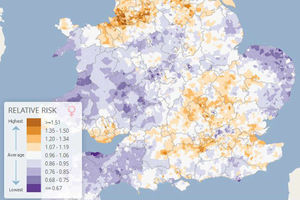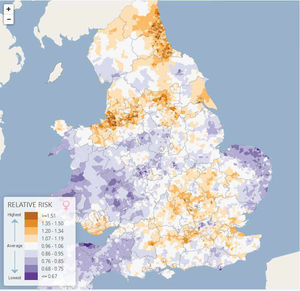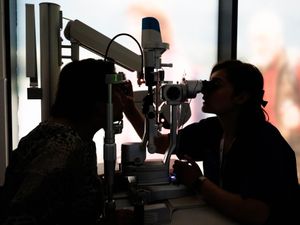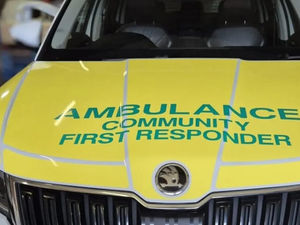New atlas maps out Midlands' bad health hotspots
Health experts have created a series of new maps, which show in detail whether or not a small area has lower or higher risks of a number of illnesses when compared to the averages for England and Wales.


The new health 'atlas' has, for the first time, revealed extraordinary patterns in a number of diseases across the West Midlands and Staffordshire.
So there's more chance of having a low birth weight if you're born in the Palfrey and St Matthew's areas of Walsall while it seems that you're at lower risk of suffering from heart disease if you live in the Langley area of Sandwell or in Coseley West in Dudley.
The pattern for still births shows that there is an above average risk in the St Thomas's area of Dudley, while if you live in Oldbury or Tividale those risks are considerably less pronounced.
And there's good news if you're worried about getting skin cancer. Rates for the whole area show that we're considerably below the national risk level of contacting that particular disease.
Geographical patterns for 14 diseases and conditions including breast cancer, lung cancer, heart disease and low birth rates have been mapped out by the Small Area Health Statistics Unit, which is based at Imperial College London.
The atlas also shows regional maps of a number of environmental hazards including air pollution, levels of sunshine and pesticides.
Being in the centre of the country it's perhaps no surprise that the West Midlands has an average amount of daily sunshine throughout the year, although the figure is slightly below average in Staffordshire.
And, being one of the most built-up areas of the UK it's against probably not surprising that we have one of the highest levels of NO2, or nitrogen dioxide, mainly related to emissions from cars and lorries, although the figures date back to 2001.
By inputting a postcode into the online version of the atlas at www.envhealthatlas.co.uk, users can zoom into a neighbourhood and examine health and environmental maps for their local area. While the maps do not show the risks for individuals living in a specific area, they provide an indication of the health risk for the area compared to the national average.
The creators cautioned that people shouldn't make simple associations between the environment and health maps – which have been adjusted to account for age and areas of deprivation. But they did say that areas of possible research could be identified through the maps.
They did find that 33 areas showed 'consistent patterns of lower relative health risks", including central London, north Norfolk parts of Suffolk and Brighton and Hove. Meanwhile eight areas showed more patterns of higher risk which were in the north west of England, parts of Yorkshire and south Wales. Dr Anna Hansell, from Sahsu, lead author of the atlas, said: "Ideally if we could measure things on every single person in the country we would do that, but we can't.
"By getting to something closer to where people live and work then we hope to understand a bit more about their exposures and how that might relate to health.
"The atlas is a fantastic tool for researchers, policy makers and the public.
"It is the first publication in the UK to amalgamate data at this level of resolution on health and environment. It connects people to health and environment at a neighbourhood level and provides resources to learn about these issues. It also allows us to identify the important questions that need answering about patterns of health and environment risk for future research."
The atlas also reveals that skin cancer is most common in the South West of England. It's the southeast that gets the most sunshine and researchers will now study whether other lifestyle factors may account for the higher risk in Cornwall, Devon and Dorset. Most striking of all is liver cancer, with a dense cluster of cases across Cheshire and Merseyside.
Dr Martin Lambord, a liver specialist at the Royal Liverpool University Hospital, said the maps could be useful for people to make them aware of the issues they face.
What the atlas reveals:
Lung disease Mesothelioma - Areas of the Black Country including Bilston North and Darlaston South have an above average risk in women. The risk is much lower in men where the figures are among the lowest in the country. In Staffordshire the figures are average or below average risk.
Prostate cancer - The risk of contracting the disease is slightly higher than the national average in St Matthew's, Walsall, Penn in Wolverhampton, St James's in Dudley and Amblecote in Stourbridge.
Breast cancer - Women in West Bromwich have a below average risk of contacting the disease. There are pockets of above average risk in East Park, Wolverhampton, Willenhall South, Gornal and Bloxwich East.
Lung cancer - For women the chances of contacting the disease are average or below average across most of the West Midlands. But for men, there is a higher than average risk in a number of areas including Bliston East, Princes End in Sandwell and Willenhall North.





